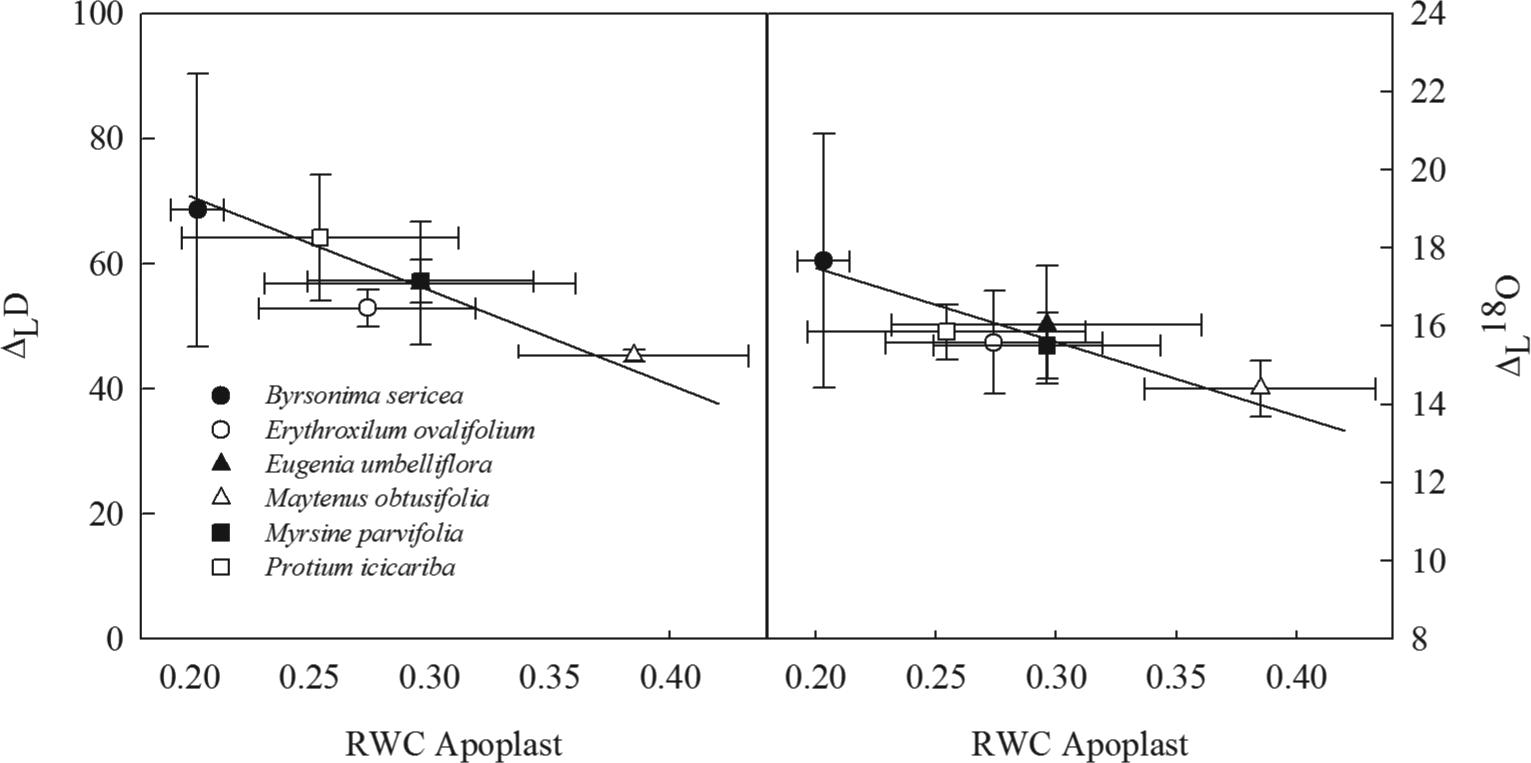During plant-transpiration, water molecules having the lighter stable isotopes of oxygen and hydrogen evaporate and diffuse at a faster rate through the stomata than molecules having the heavier isotopes, which cause isotopic enrichment of leaf water. Although previous models have assumed that leaf water is well-mixed and isotopically uniform, non-uniform stomatal closure, promoting different enrichments between cells, and different pools of water within leaves, due to morpho-physiological traits, might lead to inaccuracies in isotopic models predicting leaf water enrichment. We evaluate the role of leaf morpho-physiological traits on leaf water isotopic enrichment in woody species occurring in a coastal vegetation of Brazil known asrestinga. Hydrogen and oxygen stable isotope values of soil, plant stem and leaf water and leaf traits were measured in six species from restinga vegetation during a drought and a wet period. Leaf water isotopic enrichment relative to stem water was more homogeneous among species during the drought in contrast to the wet period suggesting convergent responses to deal to temporal heterogeneity in water availability. Average leaf water isotopic enrichment relative to stem water during the drought period was highly correlated with relative apoplastic water content. We discuss this observation in the context of current models of leaf water isotopic enrichment as a function of the Péclet effect. We suggest that future studies should include relative apoplastic water content in isotopic models.
leaf water isotopic enrichment; Péclet effect; restinga; leaf morpho-physiological traits


